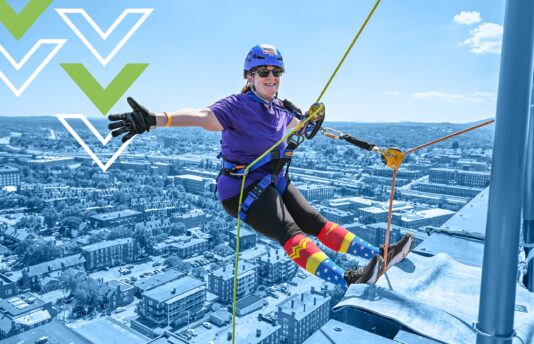In the world of media planning, we always emphasize the importance of a proper media mix. Perhaps now more than ever, establishing this mix is crucial—especially as Americans continually shift how and when they engage with media. In this blog, we share three of the latest digital marketing trends and why they should be integrated into your marketing plan.
1. OTT/CTV
The word “cord cutter” may ring a bell, with so many Americans threatening to cut the cord with their cable providers. According to the Pew Research Center, 27% of U.S. adults fulfilled this promise in 2021 and officially became cord cutters—myself included. What is sparking the movement?
Even before the onset of the COVID-19 pandemic, this cord-cutting trend was growing. Surely, the rising cost of cable subscriptions was a factor, but not the only consideration. As explained by Chief Revenue Officer Tim Sims of The Trade Desk, “It’s not because U.S. consumers have fallen out of love with TV, but that there are now more convenient ways of consuming it.”
Due to the pandemic, these trends have accelerated, with viewers turning to over-the-top (OTT) streaming services such as Netflix, Apple TV+, Hulu and Prime Video. In addition, there are CTV devices, or those devices that are connected to the Internet and allow viewers to watch OTT content, which include smart TVs, PlayStation, Xbox, Fire TV Stick and Roku. Although the terms OTT and CTV are related, they are often mistakenly interchanged. To help differentiate them, StackAdapt explains that OTT is the method, whereas CTV is the device.
In an effort to maximize OTT ads, many advertisers have turned toward implementing QR codes. While QR codes were invented in 1994, we have seen a resurgence of them during the pandemic—first with restaurants opting for digital menus, followed by OTT advertising. In fact, roughly 11 million households have scanned a QR code within the past year!
When it comes to OTT advertising, how are QR codes relevant and helpful? According to Senior Vice President of Marketing at Sabio Joao Machado, “With recent data validating that viewers who scan have increased purchase intent, brands are using this technology to prompt a variety of different consumer behaviors, such as shopping, app downloads, food delivery or even to just learn more about specific products and offerings.” Therefore, the presence of the QR code in OTT advertising allows viewers to actively engage with the ad while simultaneously providing advertisers with trackable results.
2. YouTube
YouTube has come to play a big role in media advertising as of late. Google’s video sharing and social media platform has self-reported over 2 billion monthly logged-in users. Given there are 7.9 billion people in the world, this means that nearly 25% of the world population is on YouTube! Here in the U.S., approximately 74% of Internet users watch YouTube content—equivalent to 214.9 million Americans.
There is more than just a plethora of users on YouTube—advertisers are taking note, as well. According to Social Media Examiner’s 2020 Industry Report, “YouTube is used by 55% of marketers, making it the most used video channel for video marketing.”
As might be expected, YouTube can effectively target Gen Zers and Millennials, especially those aged 18 to 34 years old. Per Sprout Social, it reaches this demo better than any other TV network! Now that is not to say Baby Boomers do not engage with the platform. In fact, Sprout Social writes, “1 in 3 Baby Boomers go[es] on YouTube to learn more about a product or service.” Still others use it for entertainment purposes.
Given YouTube’s effectiveness at reaching various demographics, it is certainly an important consideration for advertising. It is also extremely cost effective and offers advertisers various ad formats to choose from, including skippable, non-skippable, bumper and overlay ads. When it comes to measuring and analyzing ad performance, advertisers can utilize the built-in Analytics tab on their YouTube account.
3. Digital Audio
Last but certainly not least, let’s take a look at the revolution of audio with digital audio. Unlike traditional terrestrial radio, digital audio is comprised of subscription-based services, including Pandora and Spotify. Streaming music, digital radio stations, connected cars, smart speakers and podcasts are all classified as digital audio.
By very nature of digital audio, advertisers can target listeners however, wherever and whenever they are listening. In terms of when, data shows that people are very engaged with this medium. According to eMarketer, 51% of U.S. adults’ total audio time has been spent listening via digital services in 2021. To put that number in perspective, “This will be the first time digital audio surpasses traditional radio in time spent, albeit ever so slightly.”
Based on the data, it is clear listeners are very engaged with what they are listening to, making this an ideal platform on which to advertise. Advertisers also get the added benefit of ads only running when the audience is actively listening, which explains how listen-through rates are reported to be in excess of 90%.
There are two kinds of ads available for digital audio. A stand-alone audio or voiceover ad serves as a method of brand awareness, whereas an audio ad combined with a display banner triggers the listener to take a direct action. This interaction varies, but could be downloading an app or visiting a website. Thanks to digital technology, advertisers can accurately track and measure the success of their campaigns.
Now that you are aware of the latest trends in digital media, you can begin to think how they fit in your media mix—in conjunction with your traditional channels, of course!











